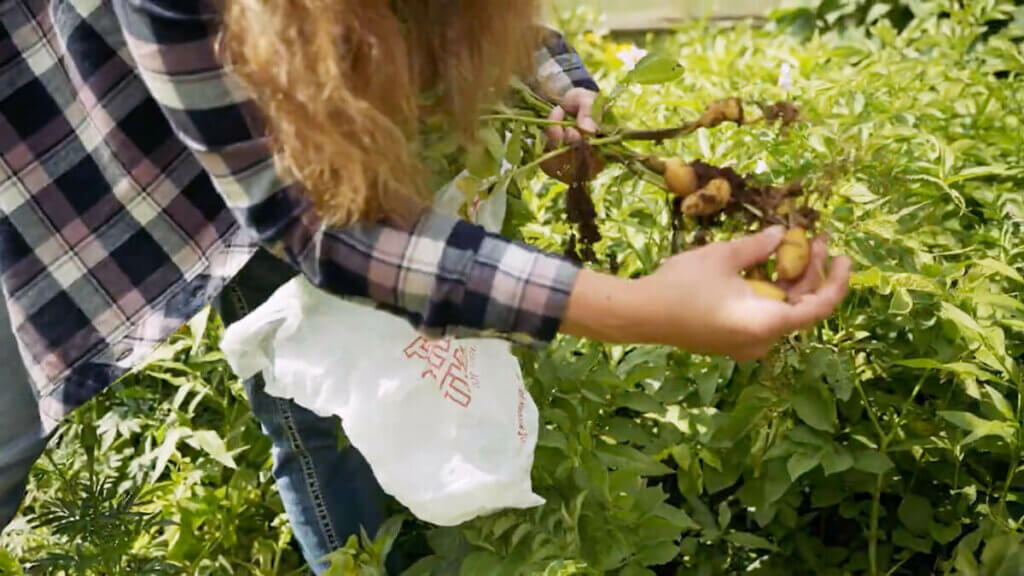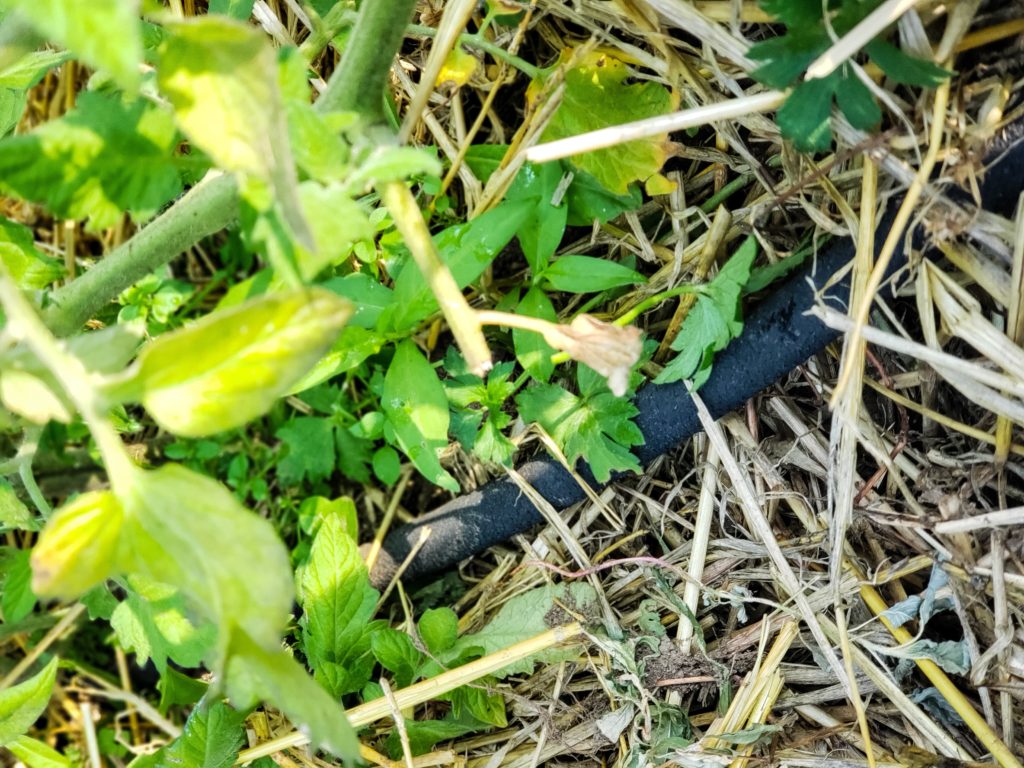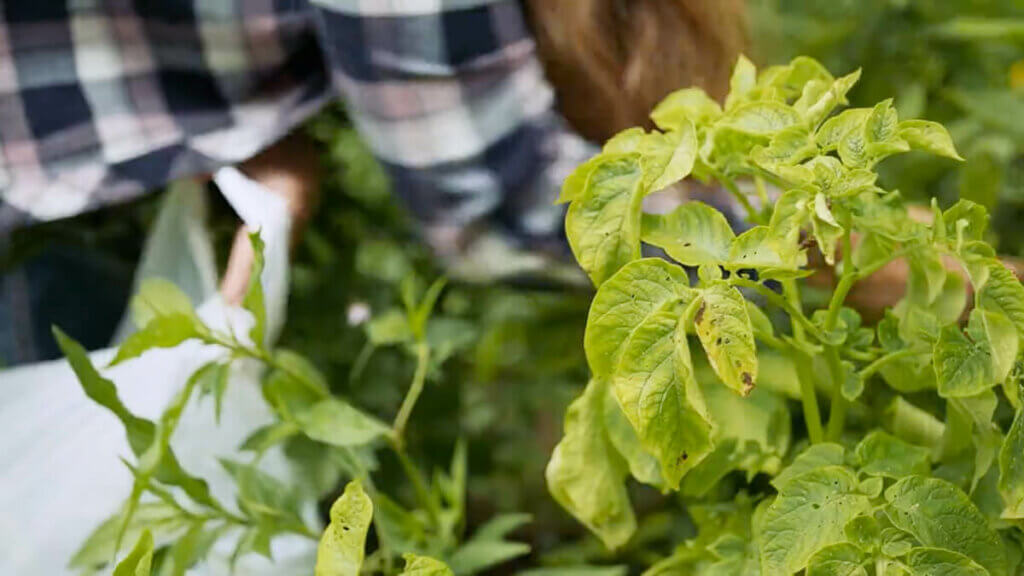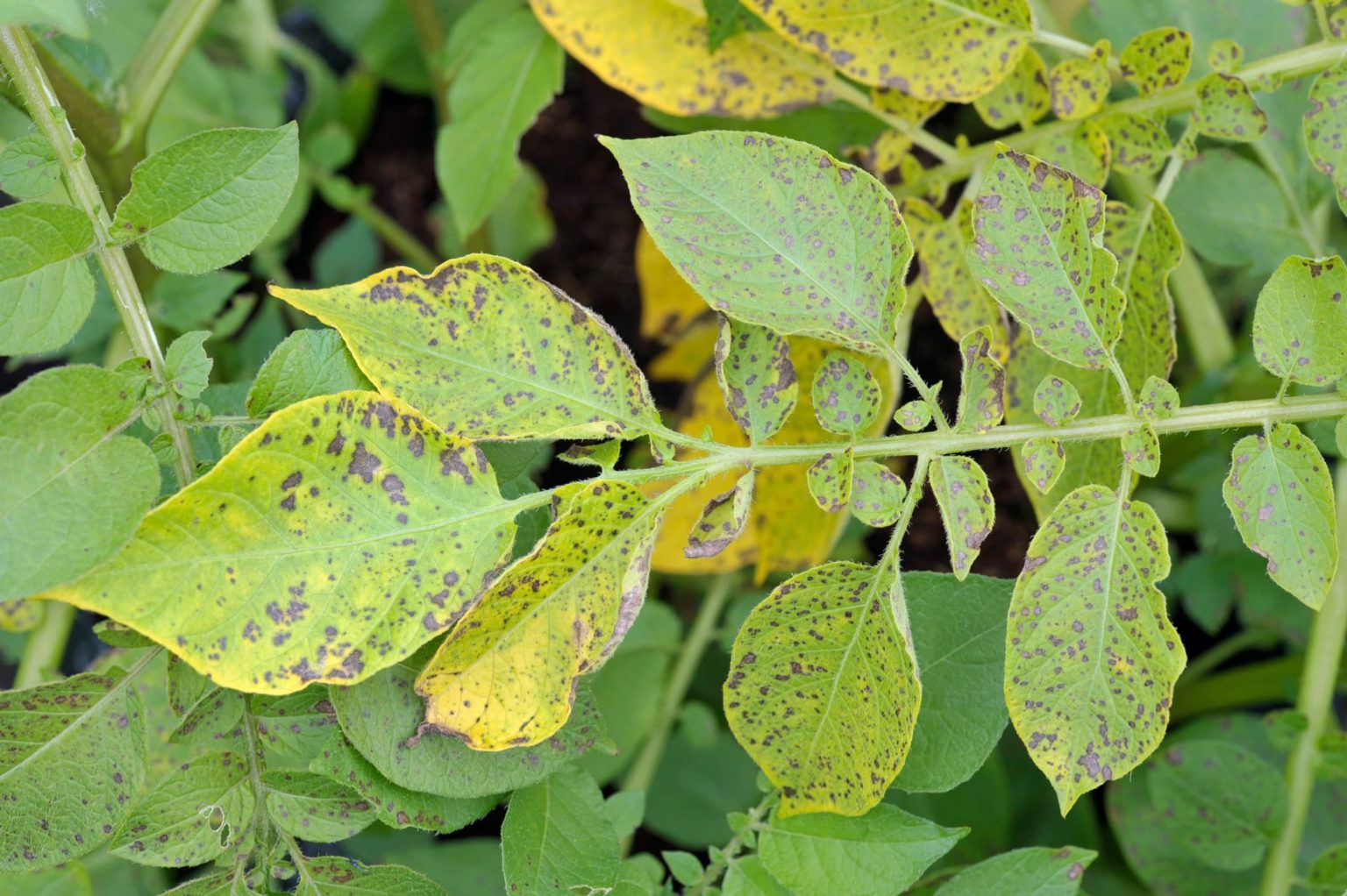Brown leaf spot is a fungal disease that can seriously damage potato plants If left unchecked, it can significantly reduce yields and lower tuber quality As a potato grower, it’s important to recognize brown leaf spot symptoms early and take prompt action to control the disease. In this comprehensive guide, we’ll cover everything you need to know about managing brown leaf spot on potatoes.
What Causes Brown Leaf Spot on Potatoes?
Brown leaf spot is caused by the fungus Alternaria alternata This pathogen can overwinter in plant debris and soil from season to season In the spring, spores are carried by wind, rain splashes, and irrigation water to infect potato plants.
The disease thrives under humid, warm conditions with temperatures between 68-86°F. Extended periods of leaf wetness allow the spores to germinate and penetrate the leaf tissues. Lesions start forming 2-3 days after infection. Without treatment, the spots expand rapidly and coalesce. Leaves eventually wither and die but remain attached to the plant.
In addition to foliage, brown leaf spot can also blemish potato tubers. Dark pits form on infected tubers, reducing their quality and marketability.
Recognizing Brown Leaf Spot Symptoms
Knowing how to identify brown leaf spot is crucial for effective management. Here are the key symptoms to look out for:
- Small dark brown spots on older, lower leaves. Spots range from pinpoint size to 1/8 inch across
- Spots have irregular shapes with fuzzy edges, unlike the concentric rings of early blight.
- As lesions expand, surrounding tissue turns yellow. Infected areas dry out and die. Leaf edges curl up and turn brown.
- Elongated brown/black marks may appear on petioles and stems.
- Plants defoliate from the bottom up but stay upright.
- Infected tubers develop dark pits with sunken, well-defined margins. Lesions are usually 1/8 inch deep and 1/2 inch wide.
6 Organic and Chemical Treatments
If brown leaf spot is detected early, prompt treatment can halt its spread. Here are 6 effective options for controlling the disease organically and conventionally:
1. Remove and Destroy Infected Plant Debris
Clearing potato fields of all diseased foliage after harvest deprives the fungus of overwintering sites. Burn or bury debris and volunteer plants to lower inoculum levels for the next crop.
2. Practice Crop Rotation
Rotating potatoes with non-host plants like corn, beans, or cereals prevents pathogen buildup in the soil. Avoid planting potatoes in the same spot for at least 2 years.
3. Improve Air Circulation
Promote foliage drying by giving plants ample spacing for airflow. Stake taller varieties to open up the canopy. Avoid overhead watering.
4. Apply Organic Fungicides
Spraying with organic fungicides boosts the plant’s defenses. Effective options include Bacillus subtilis, neem oil, potassium bicarbonate, hydrogen peroxide, and copper sulfate.
5. Use Resistant Varieties
Plant potato varieties with genetic resistance to brown leaf spot. Late-maturing cultivars are less susceptible than early ones.
6. Apply Protectant Fungicides
Commercial fungicides containing mancozeb, chlorothalonil, or other protectants give reliable control when applied preventively.
An Integrated Approach is Best
No single treatment provides complete protection against brown leaf spot. The most effective control strategy combines cultural practices, resistant cultivars, and targeted fungicide applications.
Here are some key tips for integrated brown leaf spot management:
- Scout fields frequently and be alert for early symptoms. This allows you to respond quickly before the disease escalates.
- Start spraying fungicide when plants reach full bloom. Repeat every 7-10 days.
- Avoid overhead irrigation. Water at the base of plants instead to keep foliage dry.
- Monitor weather forecasts. Increase fungicide frequency during warm, humid conditions favorable to disease development.
- After harvest, remove and destroy all crop debris to reduce inoculum for next season.
- For long-term prevention, grow resistant varieties and incorporate crop rotation.
Can You Still Eat Potatoes with Brown Leaf Spot?
Potatoes afflicted with brown leaf spot are still safe to eat, provided the tubers themselves show no symptoms. Any pitted or discolored tubers should be discarded. The remaining healthy potatoes will be fit for consumption after peeling. With prompt treatment at the first sign of foliage symptoms, losses can be minimized.
Brown leaf spot can take a heavy toll on potato yields if left unchecked. Stay vigilant for symptoms and be prepared to take action. Combining cultural practices, resistant varieties, and well-timed fungicides offers the best protection. With an integrated management plan, you can successfully limit brown leaf spot and keep your potato crop thriving.
How does Early Blight Spread?
In the event that early blight strikes your garden, you might feel bad or responsible. But don’t worry—this disease can get in even if you take all the right precautions. It can come on diseased transplants and seeds without you even knowing it’s there.
Early blight also loves warm temperatures and high humidity which will cause it to spread even faster. But it doesn’t have to be warm to spread; spores can live in the ground all winter and be spread by your hands, clothes, insects, wind, and water.

Immature or Mature Crop
Pulling up a potato plant and seeing potatoes that look very young and small is a sign of blight.
It’s possible that when you pick a potato plant, the potatoes are already full-grown. This means that the plant is mature and ready to be picked.

It’s also a good idea to know the best way to water your garden. When plants show signs of too little or too much water, it can look like they are sick when all you need to do is change how or how much you water them. Be sure you know the best way to water your vegetable garden.

Brown Leaf Spot Control on Potatoes
FAQ
How do you treat brown spots on potatoes?
How do you treat brown leaf spot disease?
How do you treat potato leaf disease?
Why are there brown spots on my potato plant leaves?
- The Ultimate Guide to Growing Strawberries in Raised Beds - August 8, 2025
- No-Dig Garden Beds: The Easiest Way to Grow a Beautiful Garden - August 6, 2025
- How to Protect and Preserve Wood for Raised Garden Beds - August 6, 2025

